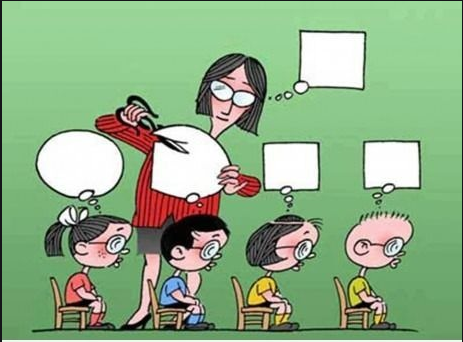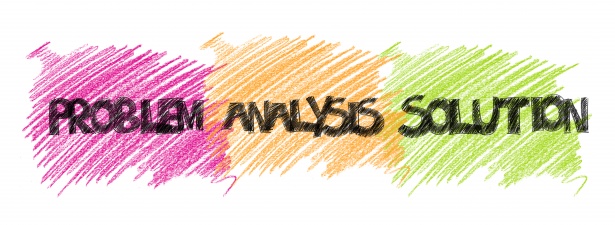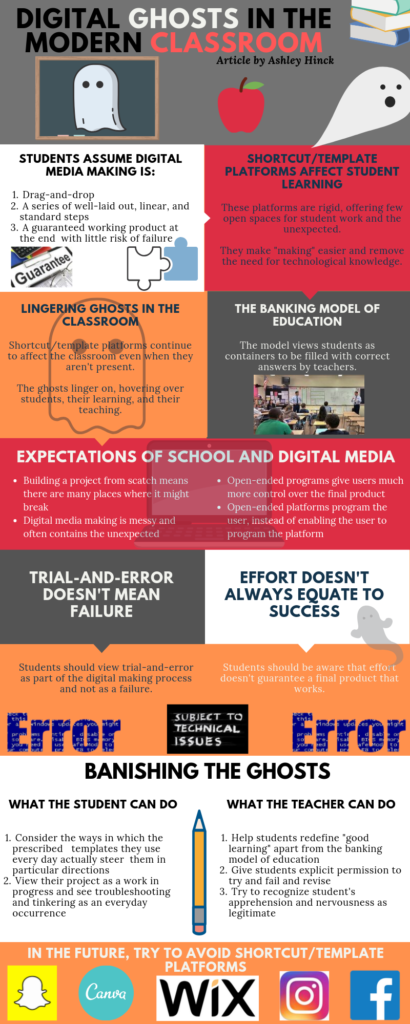For this assignment, I chose to read “Digital Ghosts in the Modern Classroom” by Ashley Hinck. I thought the article was insightful and informative. The idea that shortcut/template platforms limit the open spaces for students to be creative is one that I had never considered, but certainly one that I can relate to. The vast majority of my learning has been based around the banking model of education which emphasizes the importance of correct answers and minimizes the need for creativity.

I completely agree with Hinck’s belief that shortcut/template platforms limit a student’s ability to be creative, however, I don’t view this as a bad thing. I believe that shortcut/template platforms reduce the amount of stress that students face when creating digital media. The platforms are easy to use and guarantee a working final product. Open-ended platforms are much more difficult to use and don’t guarantee a working final product. For me, a platform that limits my ability to be creative far out-weighs the risk of creating a product that might not even work. Furthermore, I believe that there are many students who don’t necessarily desire the ability to be creative. Many students are content with using a template platform to create a “cookie-cutter” final product that will get them a good grade. Drawing on my previous educational experience, I would argue that students’ value good grades over the ability to be creative.

Although being creative isn’t something that I value, I do believe there is some merit in attempting to break free from shortcut/template platforms like Hinck suggests. Limiting the use of shortcut/template platforms forces students and teachers to step outside of their comfort zones. While open-ended platforms are more difficult to use, they can teach both students and teachers valuable life skills such as troubleshooting and problem solving. I don’t think that students should be forced to use open-ended platforms but I do believe that they should be taught and made available to students who would appreciate the ability to express themselves creatively.

When creating my artifact, I completely ignored the main message of Hinck’s article and decided to make an infographic using Canva. Canva is a drag-and-drop website that provides users with hundreds of templates to choose from. The website is free and allows you to save and download your infographic once it is complete. Although Hinck warns against using websites like Canva, its drag-and-drop interface aligns with my previous digital media making experiences. When I become a teacher, I will attempt to break away from the traditional banking model of education by encouraging my students to choose platforms that allow for creativity.

